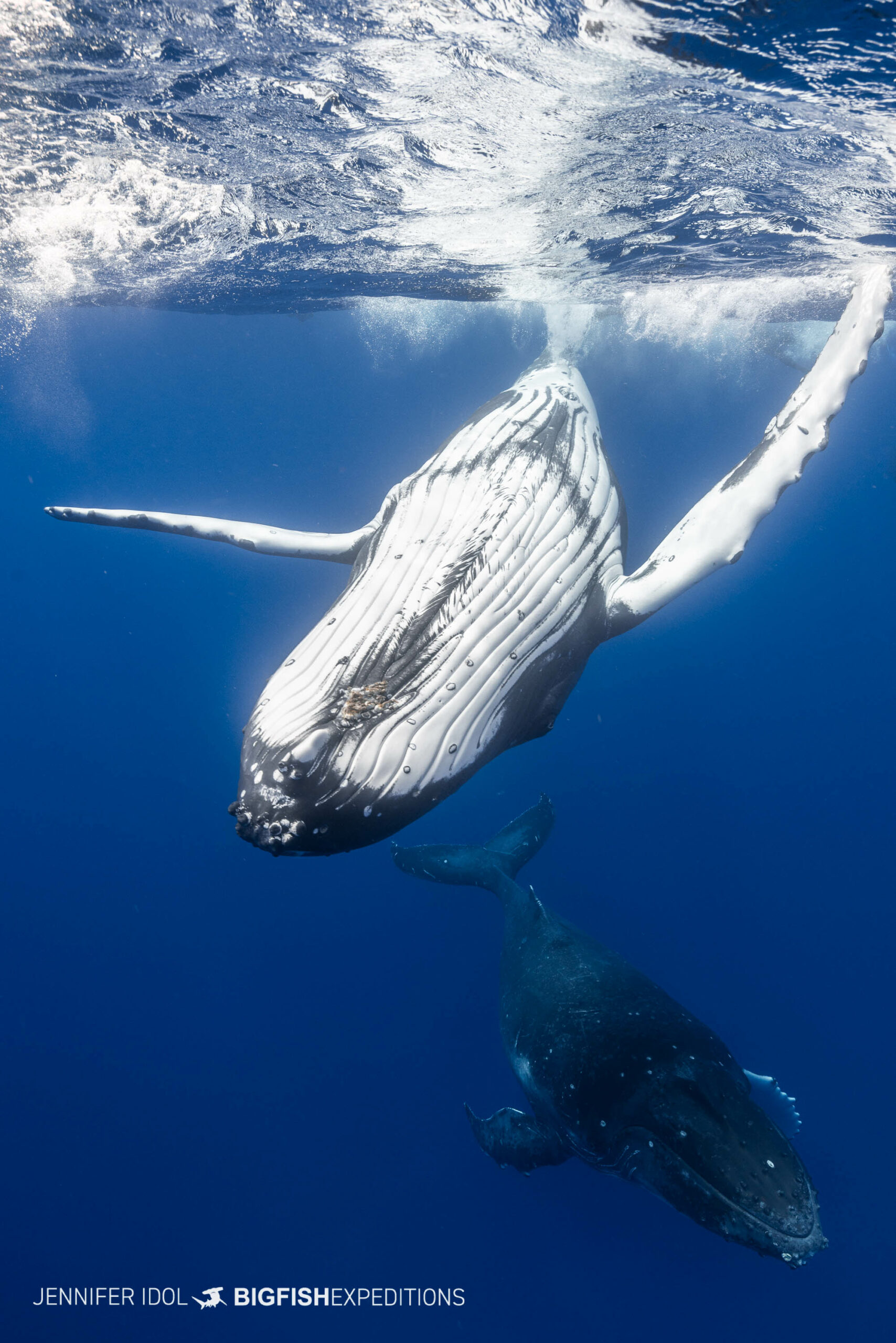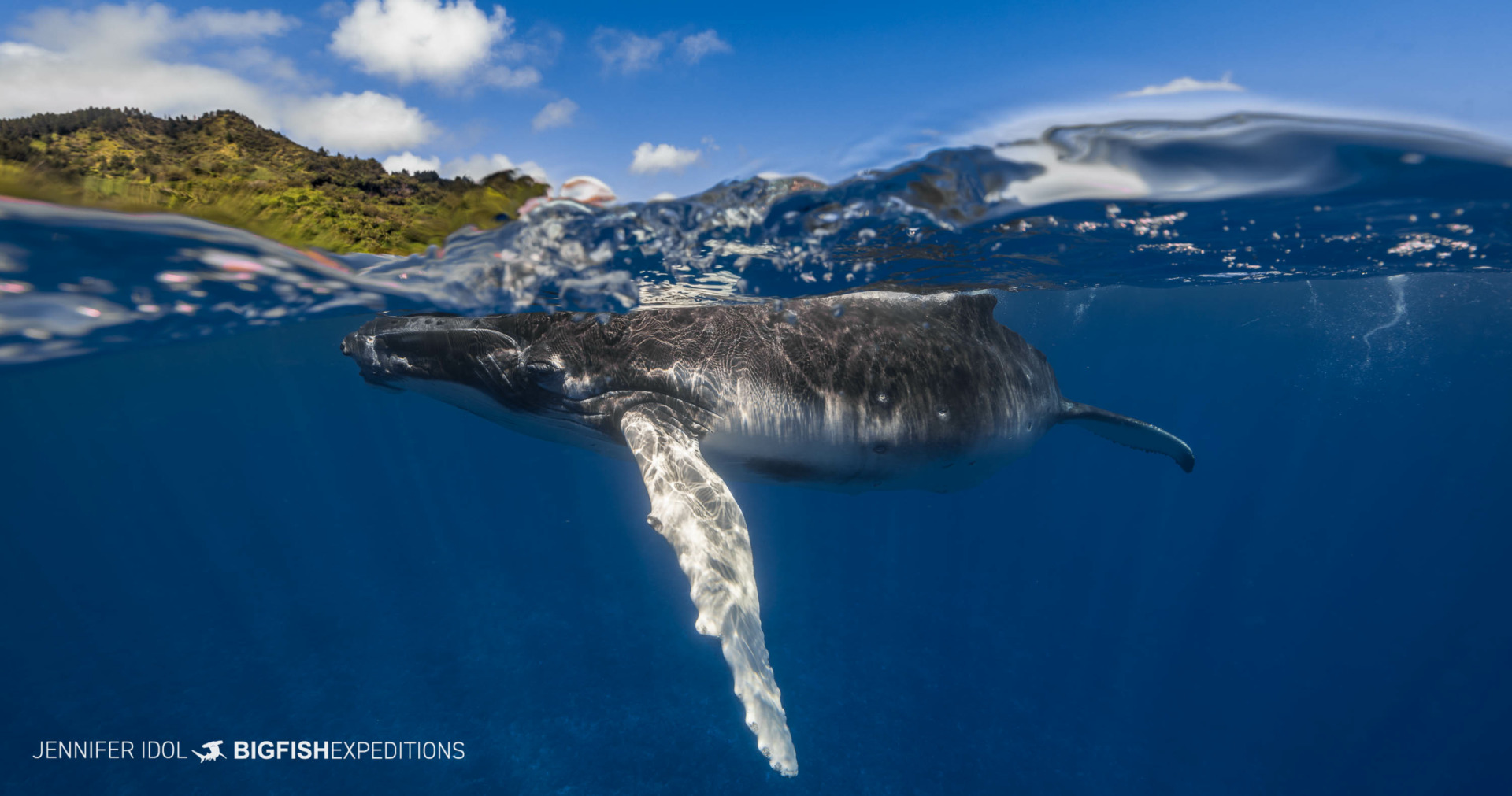
Our 2023 Humpback Whale Snorkeling Expedition was a splash
by Jennifer Idol
This trip was remarkable in all the best ways. We spent hours in the water with humpback whales, which is incredible. Nature is unpredictable and strange things are happening in the world. We know this when we lead trips, but the magic that we had this year was unbelievable. From sleeping mothers and calves to fast-paced play with large adults, this was an adventure to remember.
We could see the glint in their eyes and sometimes the whites of their eyes as they played with us. It was wild. I started the week out saying, nothing ever happens the first day. I couldn’t have been more delightfully wrong. We had an incredible first day and every day for the entire two weeks. I joked that it is always like this because it most certainly was a special set of encounters that I am eager for next year.
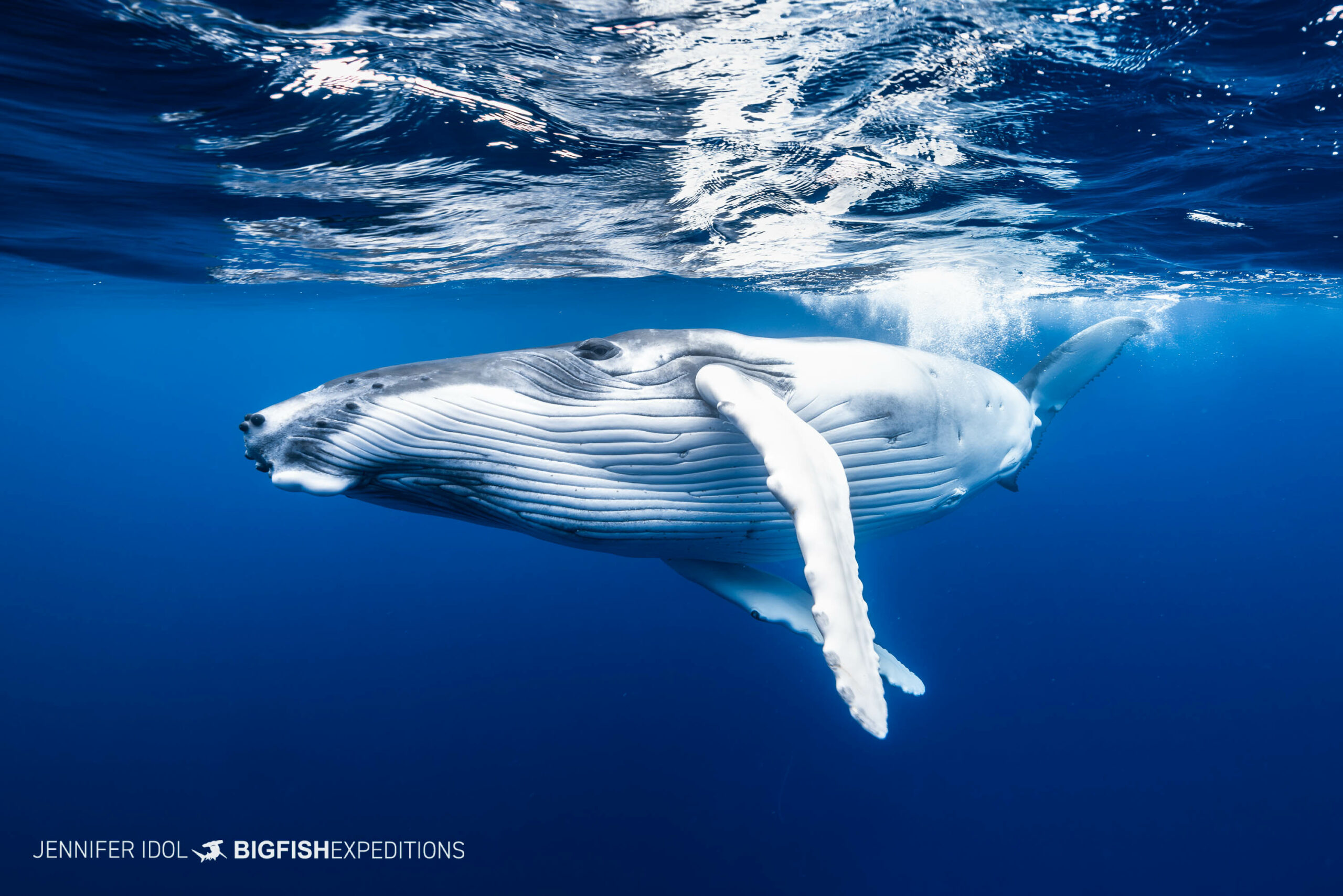
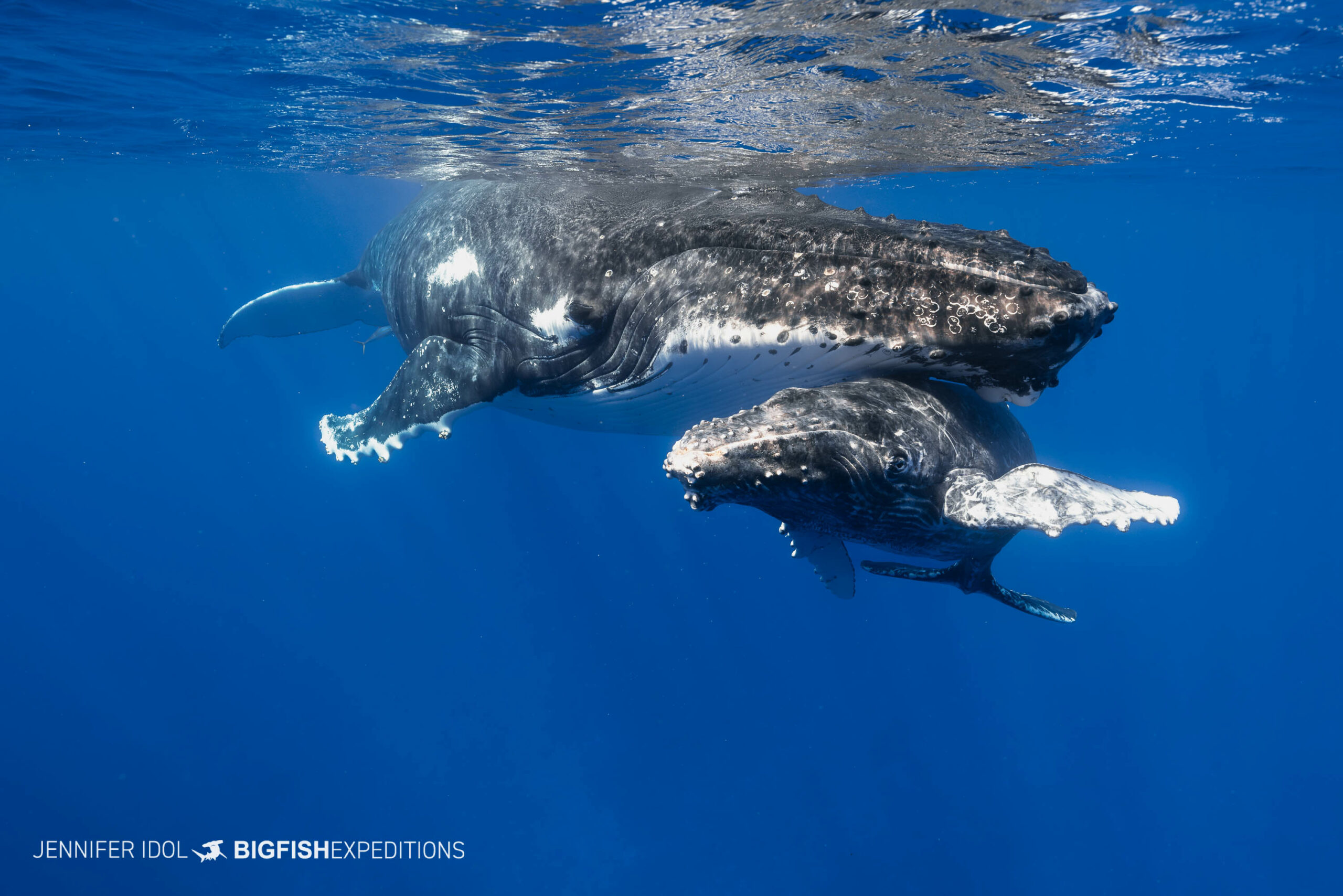
French Polynesia
The island of Rurutu is described as part of the Austral archipelago, or a group of islands, shaped like Africa. It is so much more than this that I encouraged our guests to say they simply went to French Polynesia so we can keep this island magical. It’s a special place that reminds me of what we imagine Polynesian islands to be like and what many were like in the 1960s before tourism boomed.
Flowers bloom year-round and the food you eat is grown on the island, including numerous varieties of fruit. Whale encounters are the center of activity with days that begin with breakfast and end with dinner talking about what everyone saw. For people who had time at the beginning of the trip, we toured the island and saw all parts of it with wonderfully guided context for what we saw.
A couple lagoons were truly extraordinary. Visitors who are not only swimming with whales visit the island to tour its caves. One is known as Monster Cave. We observed that cave from our boat and walked to a nearby cave that reminded us of prehistoric times.
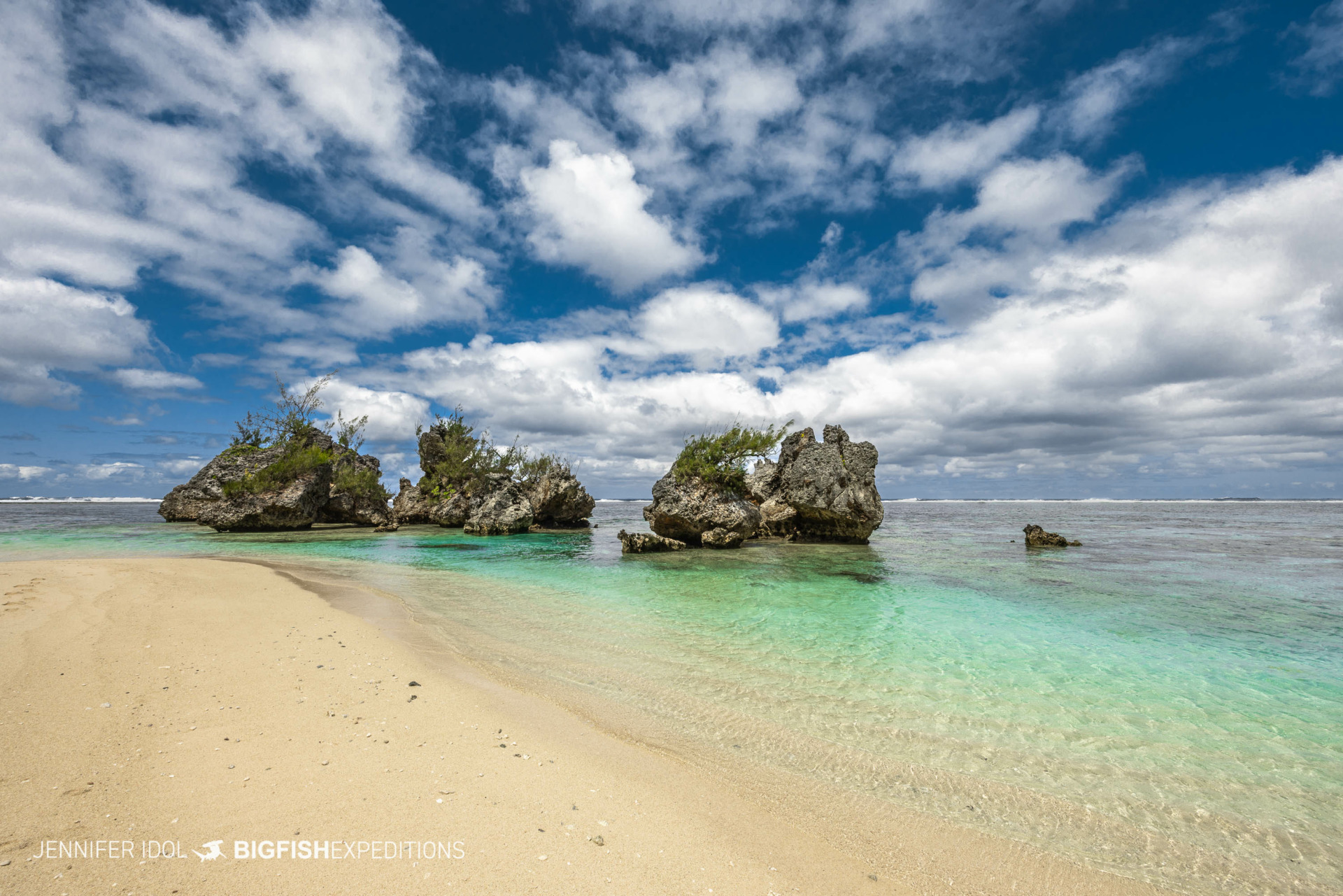
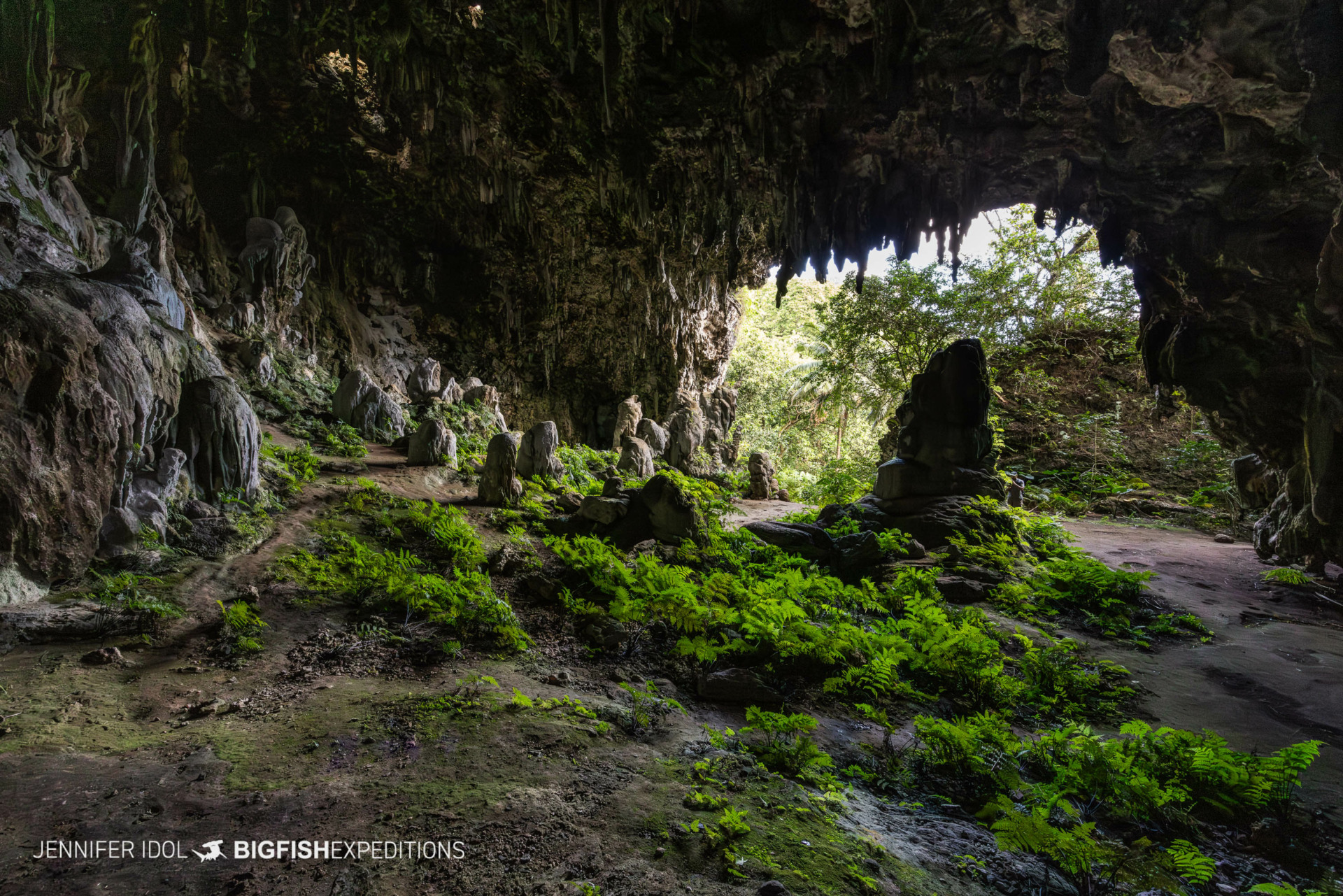
The southern population of whales
Humpback whales travel here from Antarctica to give birth and to mate. There is little to no food for them while they visit these warm, clear waters to keep their calves safe from predation. The males follow the females for mating when they are attracted to them during their estrus cycle. Males will compete with one another until one succeeds as the escort. A female can defend her calf from one male and it can be very dangerous with more than one male. We saw as many as three males competing for one female. It is a very high-speed activity.
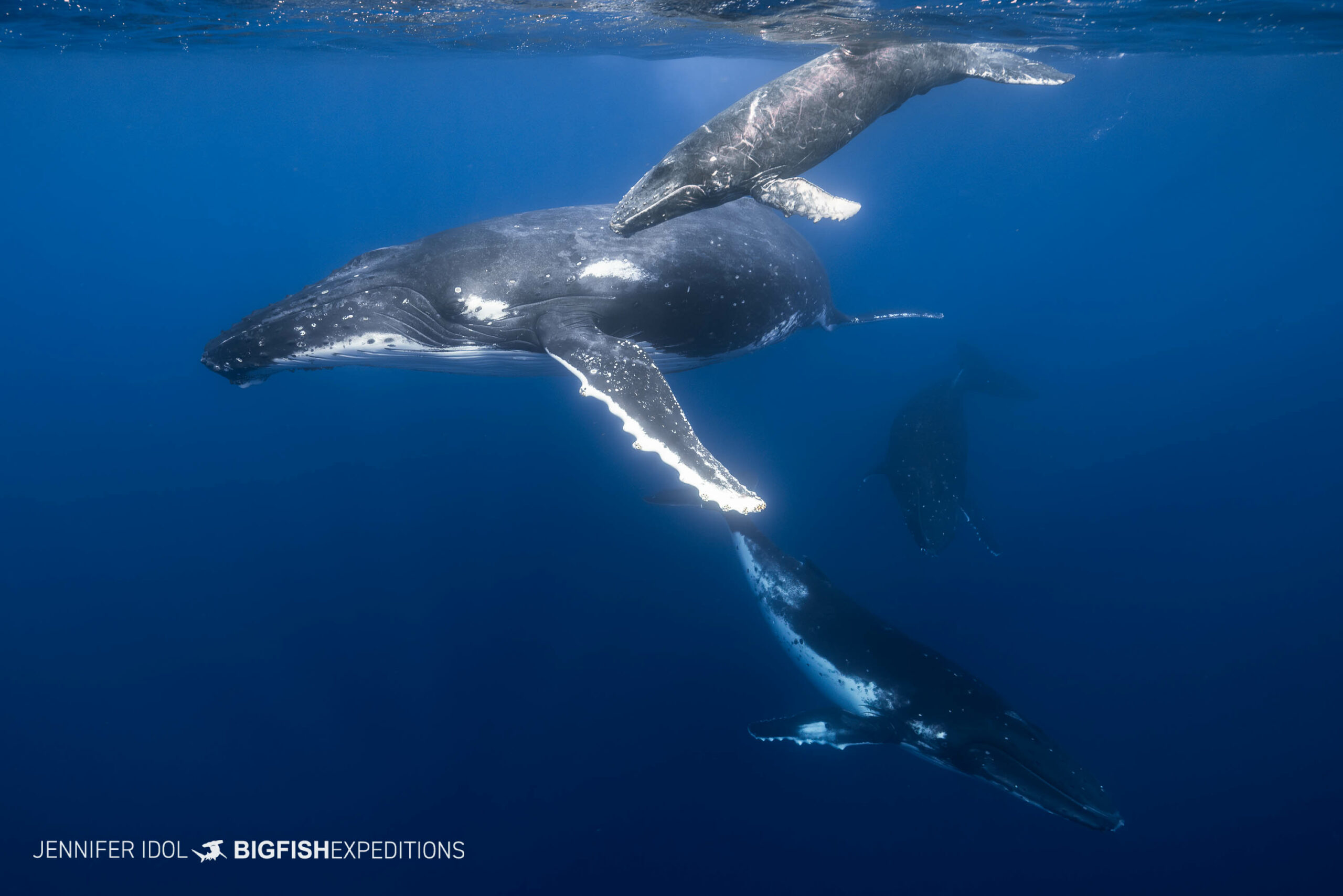
Playing behavior
Large whales that reach 12 to 16 meters (39 to 52 feet) in length and weigh approximately 36 metric tons displace a large volume of water. As they move swiftly, jump, dive, and splash the force of the water they displace is noticeable to the degree that you can feel like you’re treading water while swimming at top speed. When the males decided to play with us, they would look directly at us and sometimes swim directly toward us too. It was thrilling.
The southern population of humpback whales have more white markings than the North Pacific or North Atlantic populations. This makes them both challenging and beautiful to photograph or film.
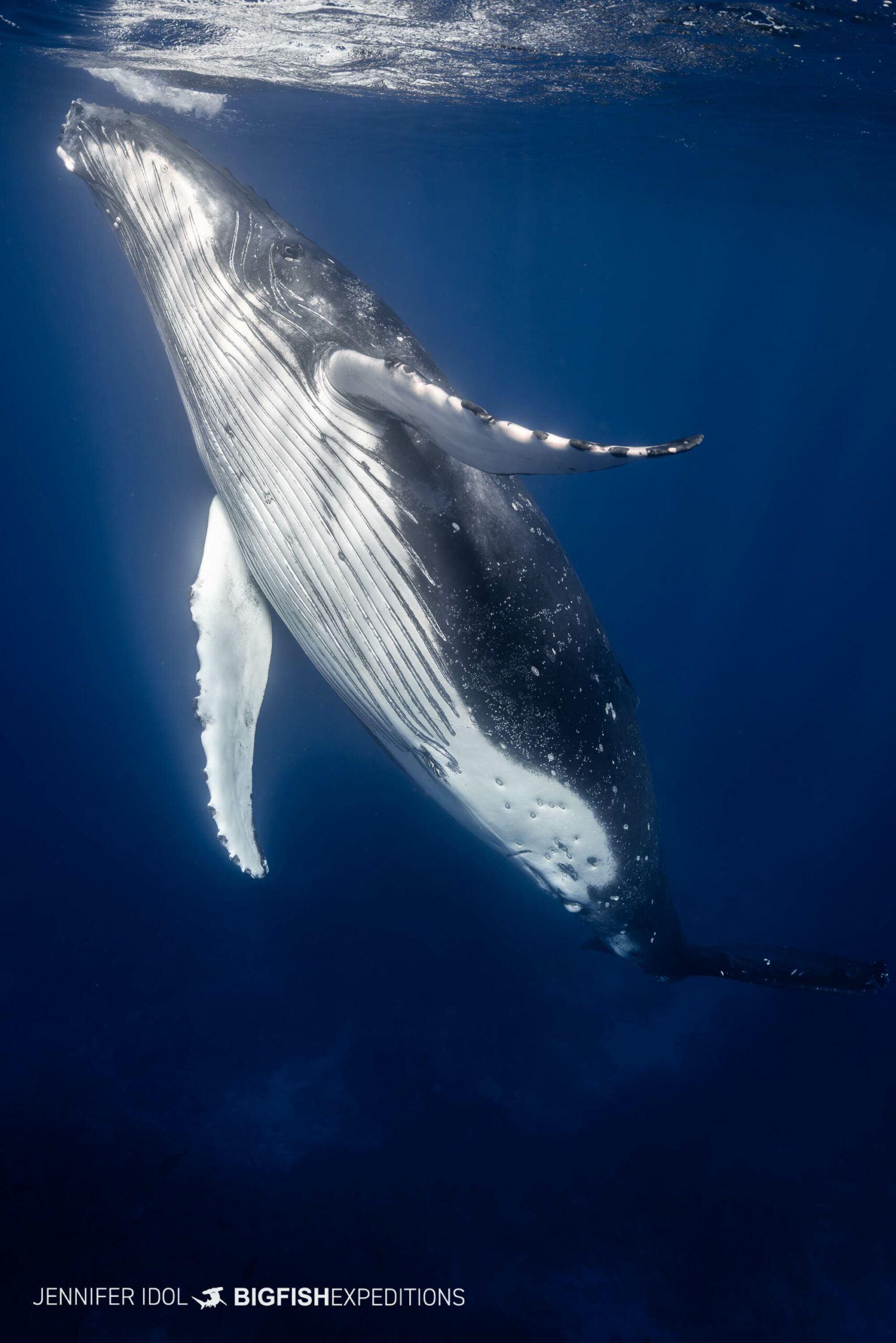
Calm encounters
We sometimes found whales sleeping either as individual males or sleeping mothers and calves. These were the most intimate moments. They would come close to us and let us see them in all their beauty. The entire group followed guidelines that helped us have consistently good encounters.
We provided education on how to work as a group, enter the water as silently as possible, and stay together on one side of the whales. This not only provided unobstructed views of whales but also let the whales feel at ease as opposed to surrounded. Although it was hard to contain squeals of excitement, complete silence made for some memorable encounters. Singing or talking to this population of humpback whales does not improve the encounter and contributes to the whale swimming away. The whales indeed were allowing us to see them and left the area when males scared mothers and calves or when the whale was done.
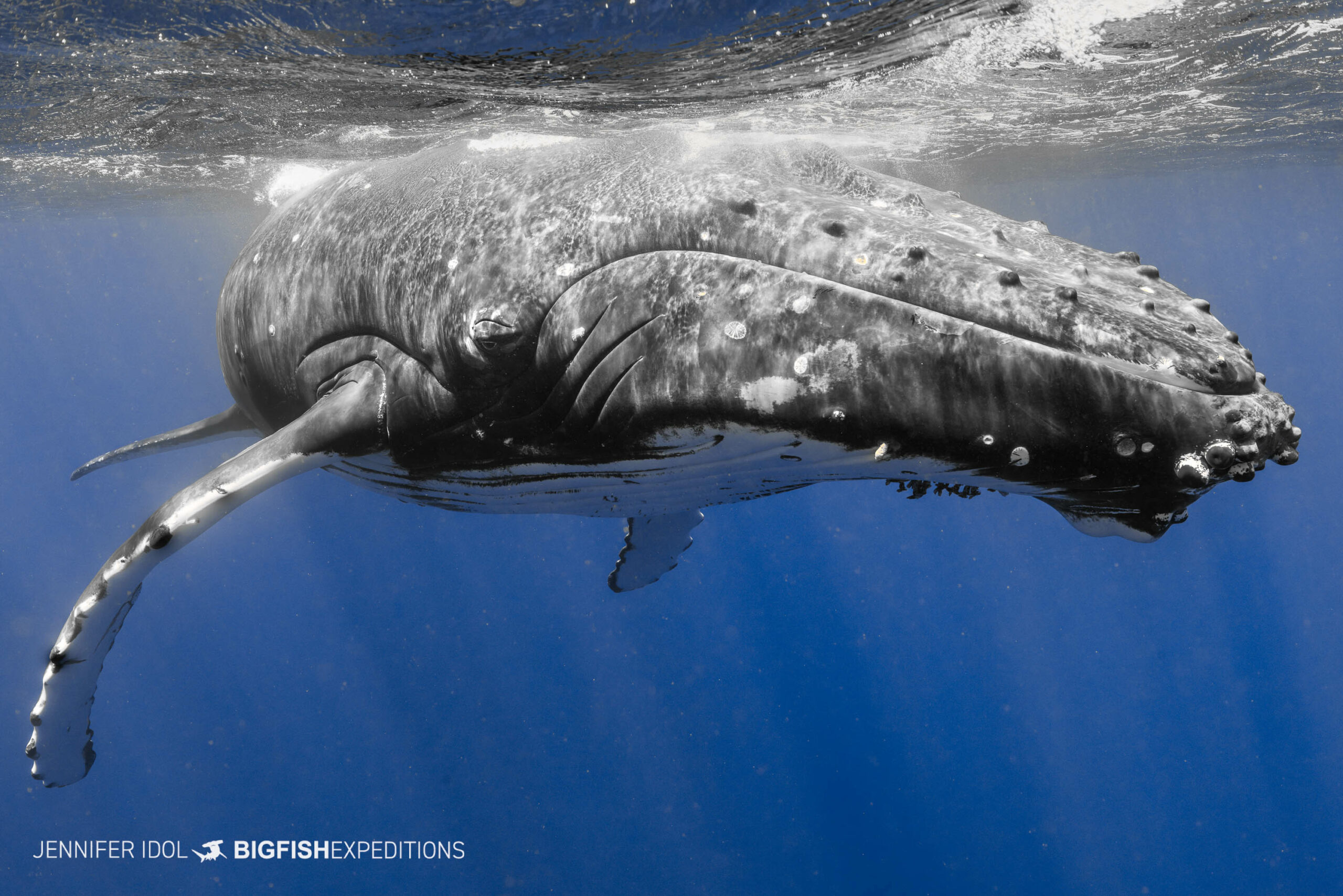
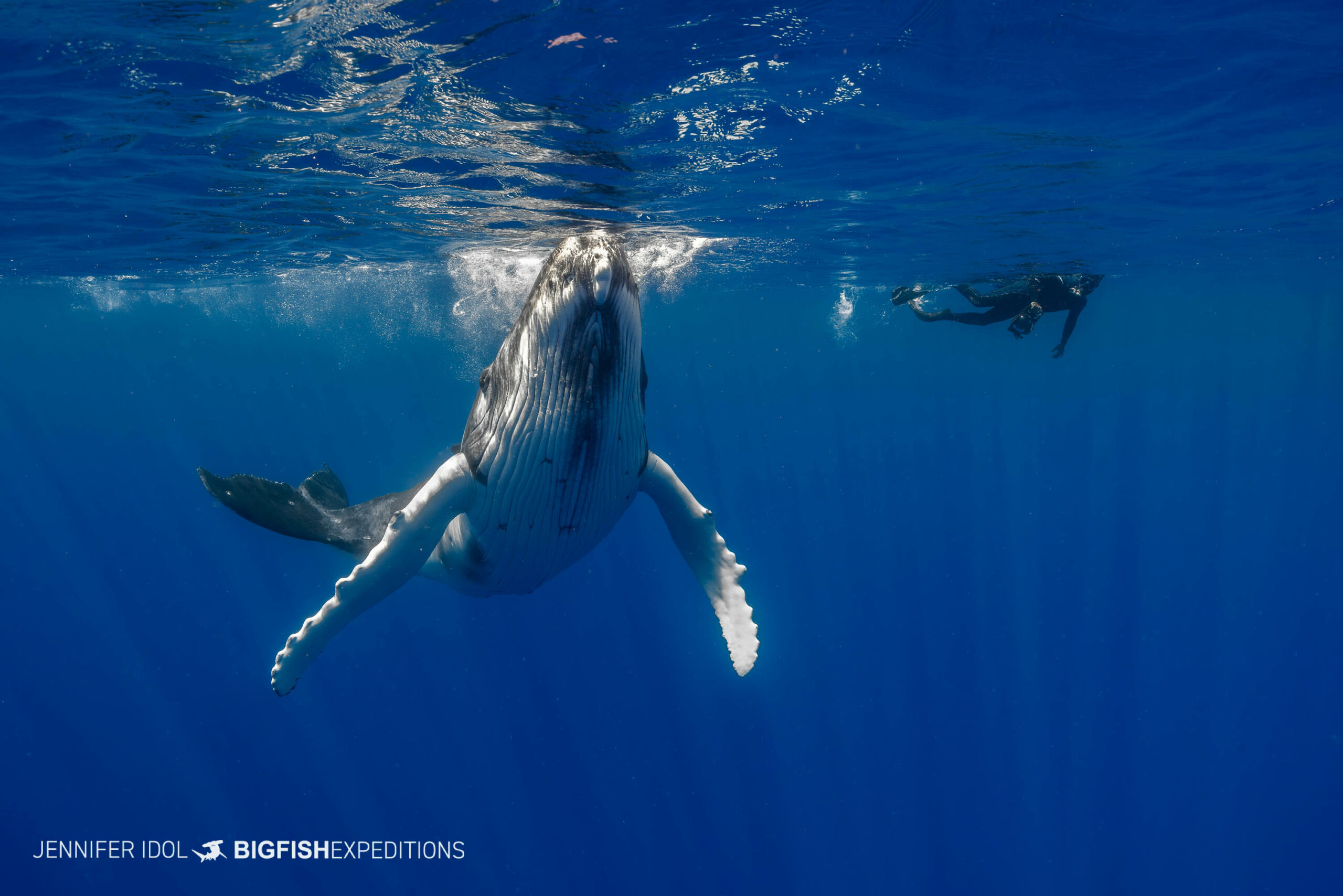
A mighty footprint
Calves are about the size of a standard SUV, weighing just over a ton and measuring over 16 feet (4.8 meters) long. Together, the mother and calf leave a mighty footprint when they descend. The displaced water creates a sucking motion that underneath looks like a bit of white turbidity and above appears like a calm and smooth spot in the ocean.
The markings on calves are often misidentified as predation or boat scarring. However, it’s a sign that they are loved a lot by their barnacle-clad mothers. Up until two months, the mother will lift the calf above her nose to help the calf raise up to the air for breathing.
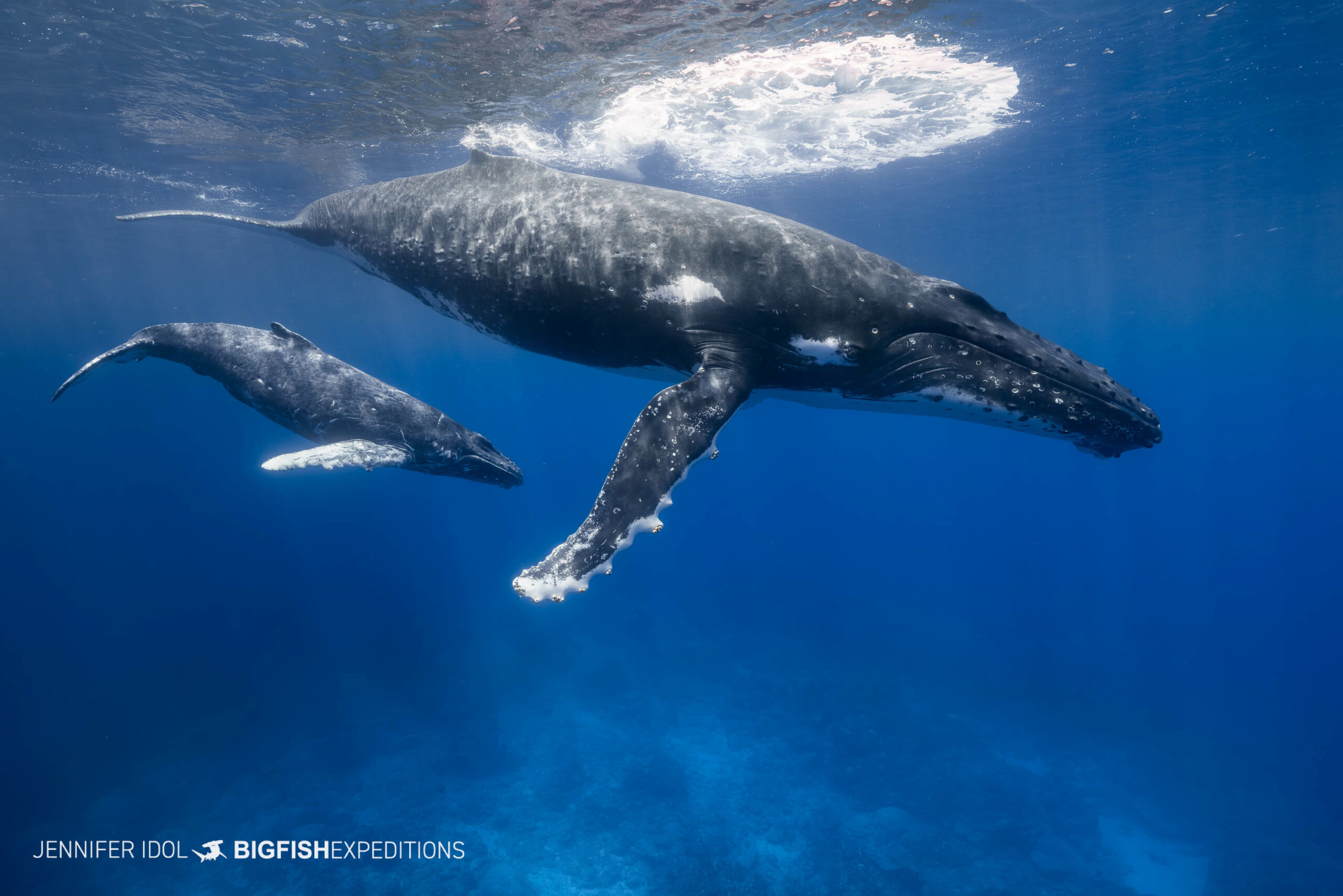
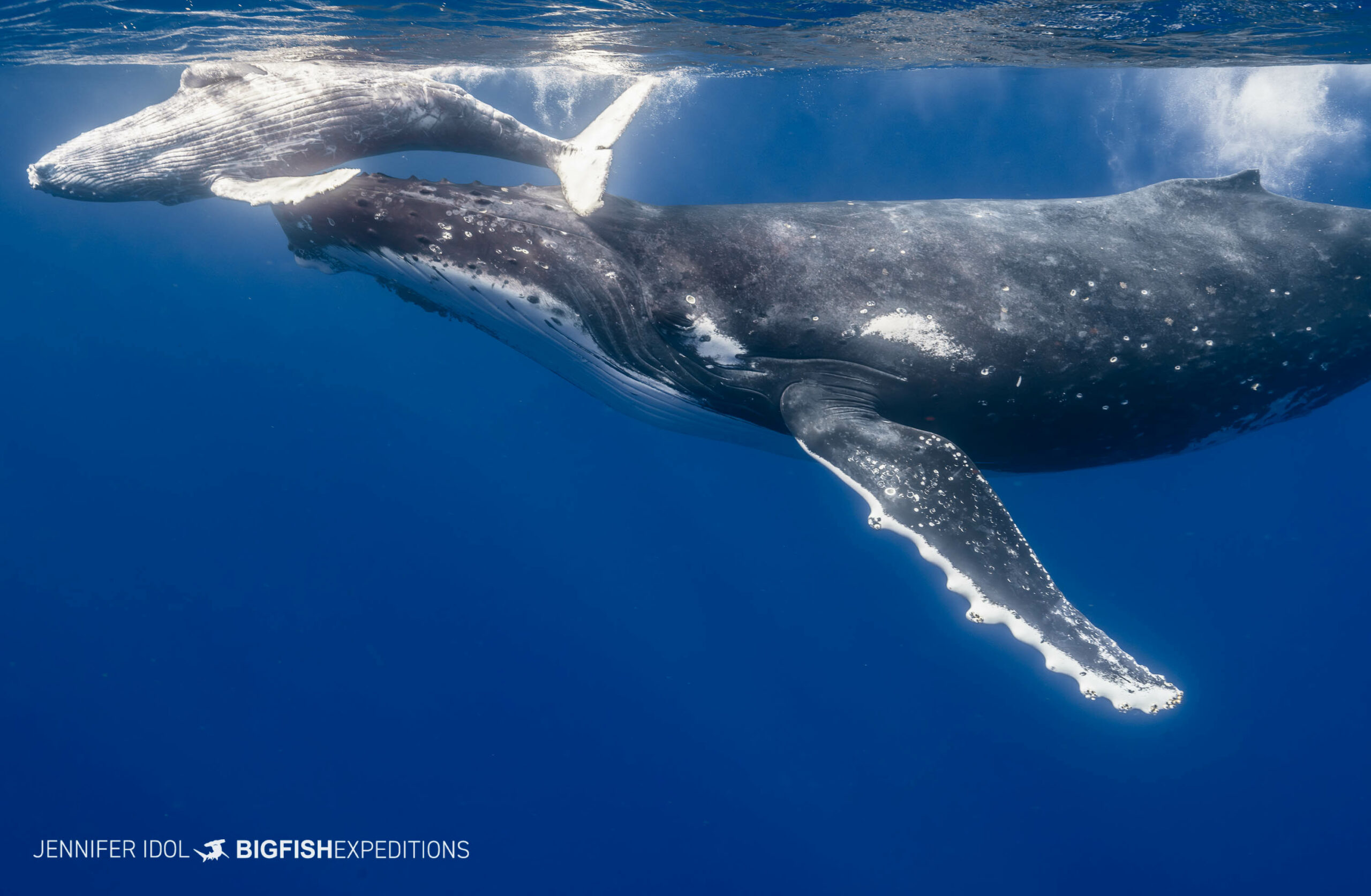
Truly massive encounters
If you’ve ever bought furniture without measuring and brought it home, you might have discovered the furniture is too large for the space. This is because, in the large showrooms and warehouses, the large furniture appears smaller than it is. This is true too for whale encounters. They seem small when we look at them through our wide-angle or fisheye lenses because we can capture the whale in its entirety. However, when a calf approaches, it suddenly becomes clear that the calf is much larger than it appears. This is even more true for the adults. To capture the entire animal in the frame, we are further away than it seems.
Bouncy calves can be dangerous encounters as a one ton weight of an animal under the force of a tail slap is significant. However, when they are sleeping, the calves appear like zombies. They rise up away from their sleeping mom to get a breath of air and make the same circling swim around their mom before descending back to her all while in a slumber state. Calves can’t hold their breath as long as their mothers. It’s important not to interfere with the calm atmosphere so that the calf can continue the cycle of breathing.
The calves will nurse with their mothers for a couple of months until they are strong enough to make the migration back to Antarctica. They’ll continue nursing for a total of six to ten months. While the calves visit Rurutu, they are not only protected by the shallow bays but also use the area as training ground. The mother will teach their calf new behaviors and build their endurance during their time around the island. We often guessed at the day’s lessons as we observed breaching, tail slapping, fin slapping, and spy hopping.
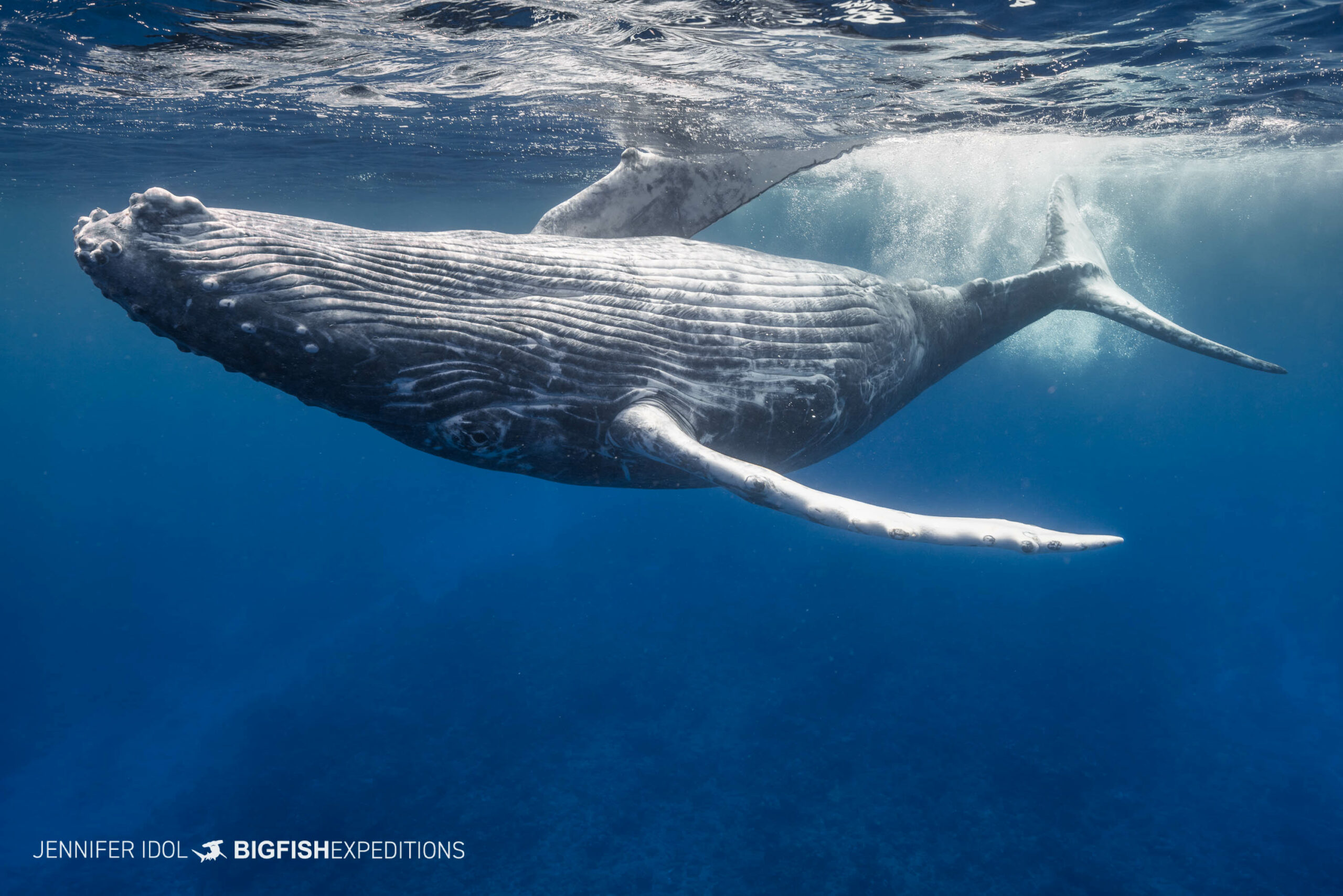
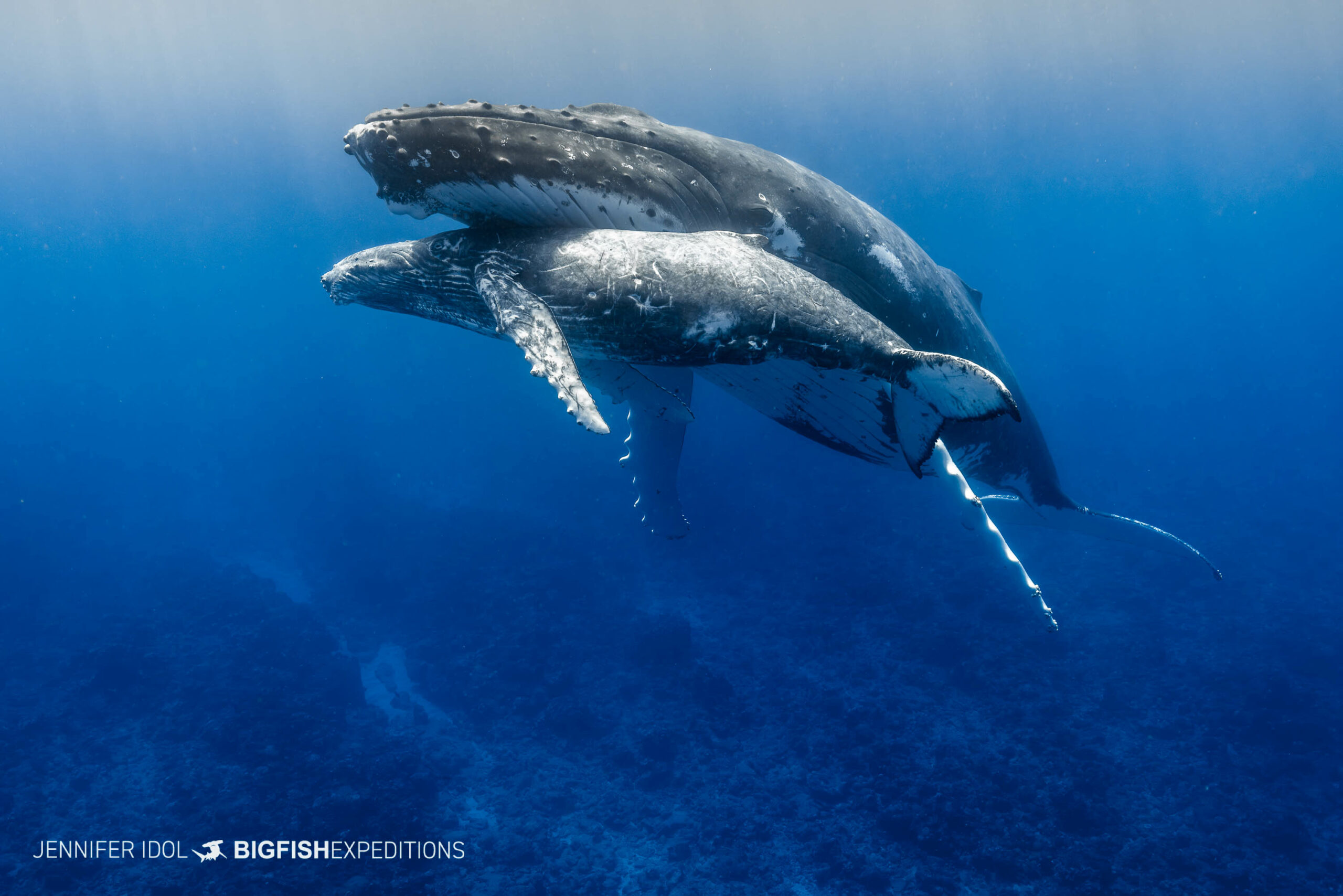
A magical destination
We were utterly entranced by the magic of French Polynesia. I am eager to see what future years bring for encounters. Although 2024 is booked, we have availability in 2025. We do keep a waitlist for any booked trip in the event that availability opens.
Join trip leader Jennifer Idol for a week in the company of playful, gentle giants: Humpback whale snorkeling encounters
